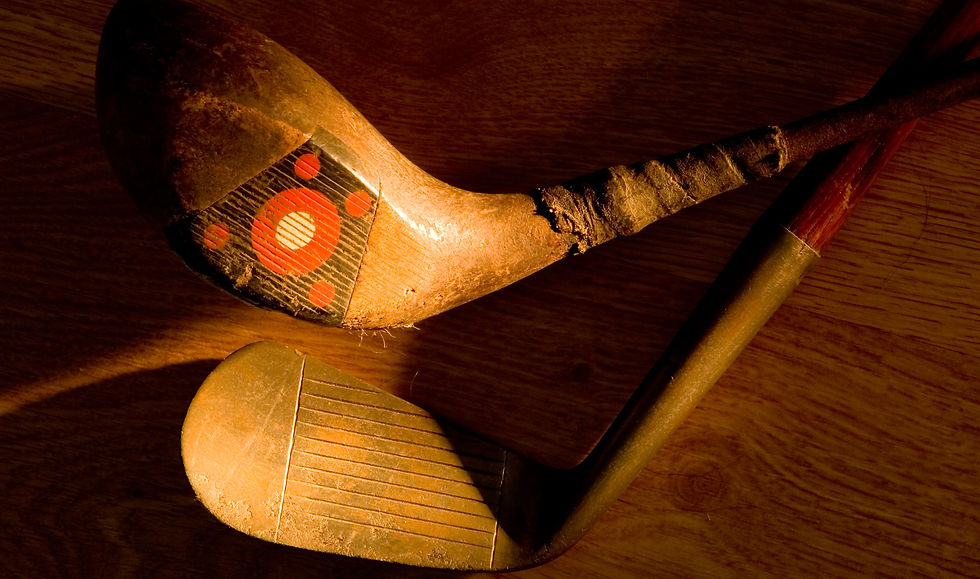Producer Barry Morrow tells the story of Moe Norman's humble beginnings with the game of golf

Moe Norman rests on the trunk of his Cadillac, where he stored all his belongings.
So you’re a dedicated golfer, right? I mean, we all say we are. But would you risk getting your butt kicked, literally, for the game you love? Would you crawl over glass, cobwebs and spiders, to get to your clubs? Would you stand near-butt-naked and dive into a dark, watery grave just for the chance to play? Moe would. In fact, he did all of the above before he ever took his first swing.
Moe Norman was born in 1929, the same year steel-shafted clubs were legalized by both the USGA and the Royal & Ancients. Prior to that, golf clubs sported wooden shafts. When Moe started caddying as a boy at Westmount C.C., many of the old-timers there were still fond of playing their hickories, despite the clear advantages of steel, which were lighter, stronger, more durable, and had little torque or twisting. Steel-shafted clubs were also sold in matched sets, and were numbered sequentially, 1-9, plus wedges. Hickories, however, still seemed “friendlier,” and they had fanciful names like brassie, mashie, jigger, bulldog, niblick, and spoon. No one ever fell in love with their “6-iron,” but a spoon? It even rhymes with June.

When Bobby Jones was given the choice of playing steel or hickory for the 1930 Grand Slam, he stuck to what he knew and won the darned thing (the “impregnable quadrilateral”) with his everyday hicks, along with his beloved wood-shafted putter, Calamity Jane. Then, having achieved golf’s highest pinnacle, Bobby did what I always wanted to do: retire at age 28.

A stamp printed in USA depicting Bobby Jones' 1930 grand slam win, circa 1998
Moe never had a choice of weapons. Born on the eve of the Great Depression, his working-class family could barely afford food for the table, let alone golf equipment. No, Moe had to assemble his motley set of clubs one at a time, each a butterknife-like blade with a thimble-sized sweet spot. Hickory clubs were and are difficult to hit, which is why so many of them ended up in that wide, dark pond fronting a hole at Westmount C.C. – those frustrated old-timers threw them in there!
Enter red-headed, junior caddie Moe, furiously pedaling his bike across town in the dead of night, his family household and all of Kitchener, Ontario, fast asleep. Standing before that pond [as he once confided to me in an interview], he stripped down to his skivvies and dove in, down to the inky, stinky bottom where he fished around with his hands until—voila! A rusted niblick appeared in his grasp, followed by a rut iron, then a mid-mashie, and, according to Moe, several trillion bloated golf balls. But it only takes one to make your first swing, and that’s what young Moe did right there and then on the banks of that pond, his only witness the moon. And when he swung, the universe must have shifted, for a golfer the likes of no other was, in that instant, born.

Young Moe Norman (left) with friends at a golf course during the 1950s.
Irwin Norman, Moe’s father, a factory worker, did not like golf. It was a rich man’s game, a sissy game—not a working man’s sport like hockey or baseball—and he would not stand for any son of his caddying for bankers or wasting time hitting golf balls.
Moe’s words, as I recollect them:
“He found them [the hickories]! He found them and he broke them over his knee and he—he—he woulda used ‘em on me—oooh, you better believe it! But I got away. I got away.”

Moe Norman's childhood home in present day Kitchener, Ontario.
It would be several years before Moe would be able to afford a second-hand set of steel-shafted clubs, those beauties that Sarazen and his like were playing. In the meantime, Moe needed a place to stash his new batch of reclaimed hickory sticks, and one night during a family meal, with his watchful eyes focused on the man at the head of the table, the man whom every boy most fears and loves, his father, it came to him.
.
“I hid them under the house! I was skinny, see. My dad, he ate a lot. He was fat. So, ha! I put them where he couldn’t reach ‘em – suuure I did! -- even if he knew where to look, he couldn’t get them, see? Ha-ha! A foot… a foot off the ground, see, with spiders and busted glass and dead things, and they all kept him away, see? Kept my clubs safe.”
Fellow golfers? That is dedication.
Producer, Director, and Oscar & Emmy-winning Screenwriter Barry Morrow leads the production team of the documentary.
Comments